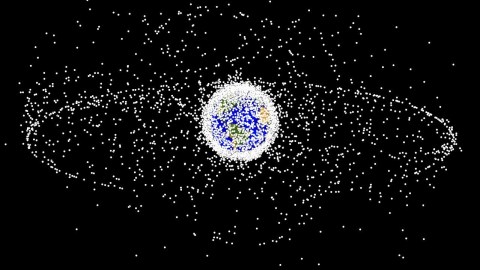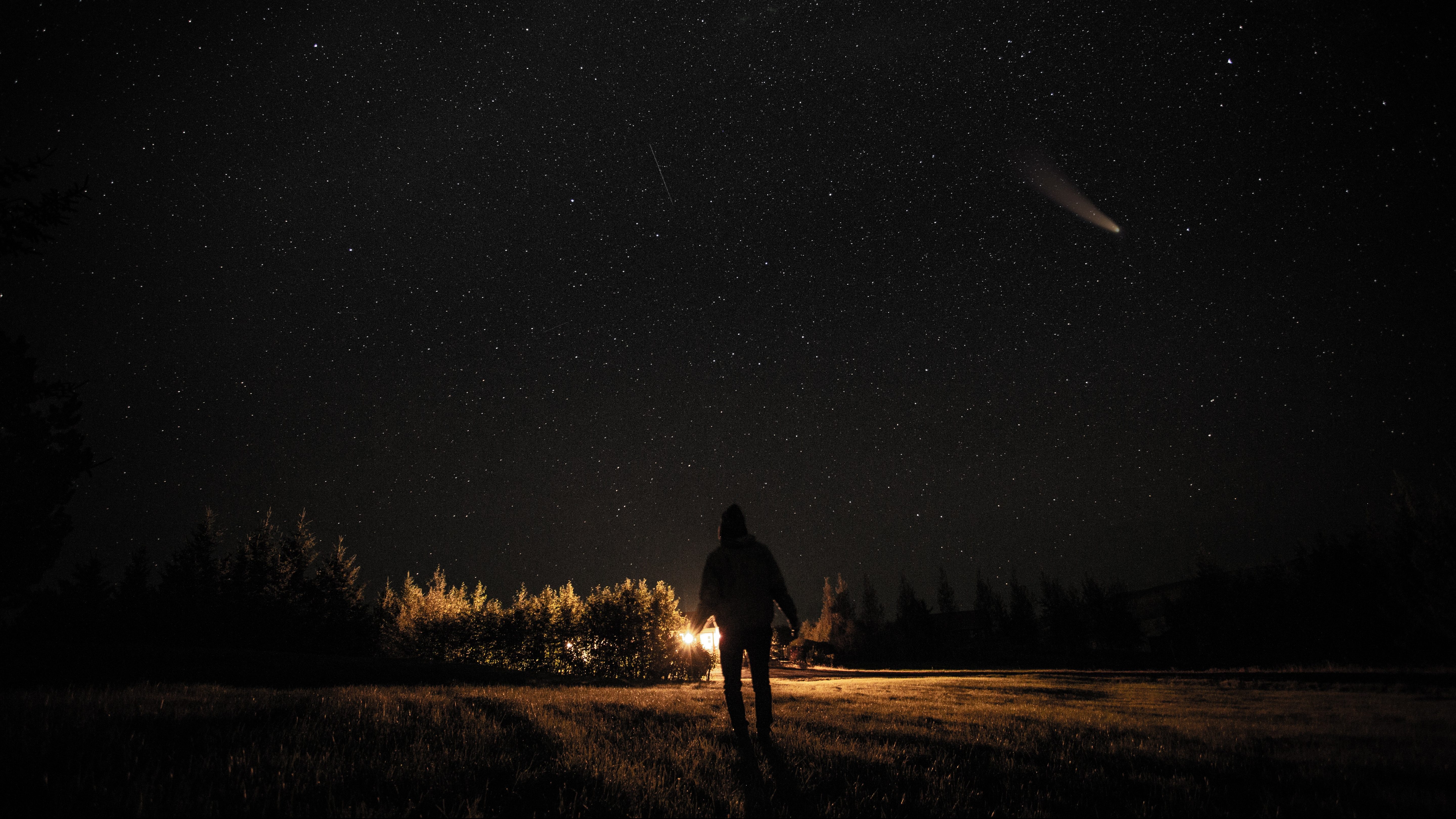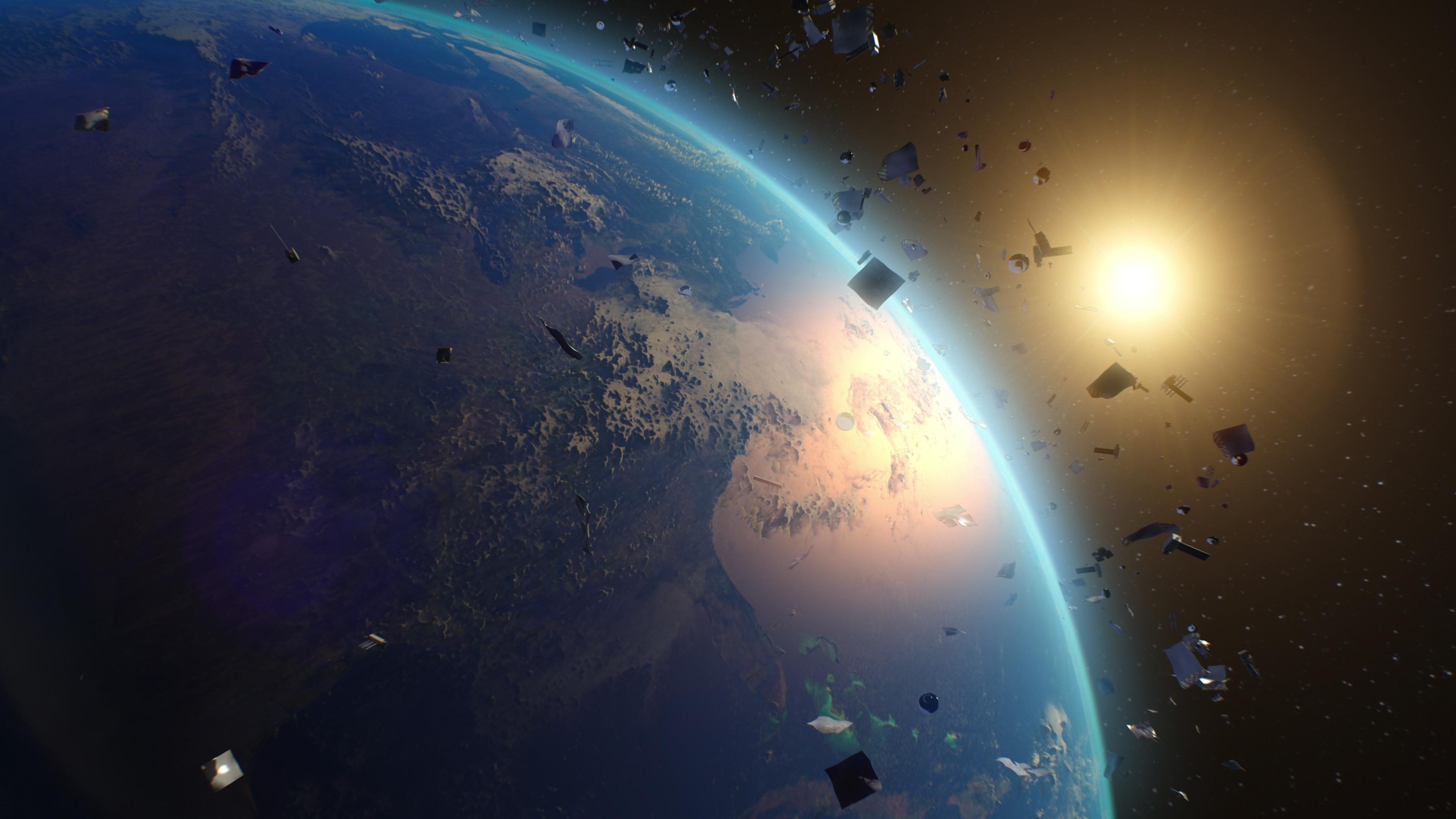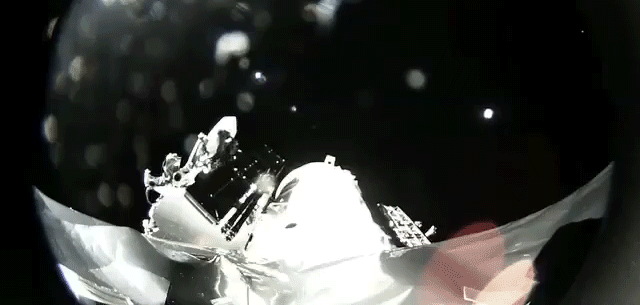Astro Trash: A Cage of Our Own Device

A massive earth-based laser has just locked on to the scrapped hulk of an ancient cosmonaut satellite. The laser blasts from a massive cannon and collides with the hulk, politely easing it aside.
What’s the Big Idea?
Space Debris Research has just successfully tested the world’s first space debris clearing device, a privately owned laser cannon, which doesn’t explode the debris, but simply nudges it into deep space. Although this whole scene takes place in the future, it is the near future.
The age of space trash creation began 54 years ago when the Soviets launched the first artificial satellite. Dead space craft, lost equipment, discarded boosters, and scrap from satellites destroyed by U.S., Soviet, and Chinese anti-satellite weapons comprises a layer of space trash orbiting our planet. It has been slowly accumulating, creating a barrier of millions of pieces of debris, that will soon be too thick for our space craft to evade. In other words, we could be trapped on the Earth by the very machines we once used to escape its gravity.
In addition to such common uses as television and GPS, satellites now assist in financial transactions, tsunami warnings, automated farming equipment and dozens of other tasks. The space industry is worth an estimated $240 billion annually, not to count the impending spacerush of low-earth orbit tourism.
And the whole enterprise is in jeopardy unless the debris field can be cleared.
Enter Space Debris Research, a new start-up, and the first in a series of start-ups Big Think will highlight that are founded out of Singularity University ‘s 2011 10^9+ Projects, a program so named because of its goal to positively impact more than one billion people’s lives in ten years.
Major Franz “Super-Geek” Gayl, best known for blowing the whistle on his Pentagon employers for failing to purchase armored vehicles demanded by battlefield marines, teamed up with Dr. Lucy Rogers, a science evangelist who holds a Ph.D in Liquid Dynamics. It was Rogers who pitched the idea for a space cleanup company, and Gayl was immediately taken.
Gayl specialized in the technical aspects of the work, especially lasers, with which he became an expert while working with the Pentagon. Rogers took the role of coordinator and spokesperson, ensuring Singularity University deliverables were met. The two joined forces with Dr. Yvonne Cagle, retired astronaut and NASA liaison for Singularity University and a team of four other students with the goal of removing orbital space debris from the Earth’s atmosphere.
The project went through various iterations, including a brief spell with the name Astro Trash, before they submitted their final project, including a 70-page technical report on “the current state of the art of tools and techniques of space debris removal, mitigation and collision avoidance.” Most of these techniques have not been tested.
The final twenty or so pages of the report comprises a litany of outside-the-box big thinking: kinetic and electro magnetic resonations, high energy lasers, space mist to “deorbit” debris, robots, tether secured nets, solar sails, and orbital spheres aka “space flypaper.”
The group concluded that using lasers to politely nudge the debris out of the way was the best and quickest approach. More destructive techniques run the risk of triggering what is called Kessler Syndrome–exploding satellites colliding with exploding satellites ad infinitum, or at least until the Earth is completely walled in by billions of particles travelling at tens of thousands of miles per hour.
In addition to the for-profit Space Debris Research, the team plans to found a nonprofit International Space Debris Trade Association to link major stake holders such as satellite operators, insurers, military, governmental space agencies, and other groups working on issues such as space situational awareness, space weather, air traffic control and collision avoidance devices and techniques.
Going forward, the team is holding meetings with executives in both the national and international space community who Rogers says have already been very encouraging and supportive of the mission. In an email to Big Think she wrote, “Initial consultations with many of the stakeholders has proved very promising, and I am planning a workshop to bring all interested parties together.”
What’s the Significance?
The space industry itself is worth billions of dollars, and with a strong likelihood that space tourism will grow as exponentially as the technologies it will employ, stakeholders are likely to quickly gather around this project. If you consider the earth industries dependent on space technology, which represents trillions of dollars and impacts every human being on and off the face of the planet, this seems likely to be one hell of a big idea.
Tune in next week as we explore another Singularity University project, Matternet. Using drones to transport food, medicine and any number of goods to remote locations in much the same way one sends an email.




